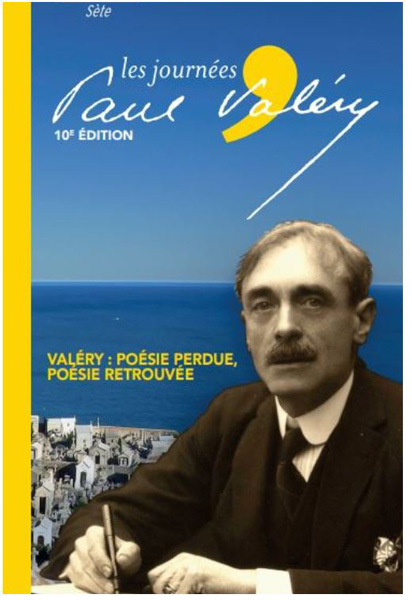
Located on the side of Mount St. Clair on a terrace overlooking the Marine Cemetery and the Mediterranean Sea, the Paul Valéry Museum has an exceptional view and location.
After several months of work, it reopened its doors on June 18, 2010.
A museographic reorganization has allowed a redistribution of spaces, an extension of the rooms open to the public and a new presentation of its collections.
Its architecture, designed by architect Guy Guillaume, dates from the early 1970s and is in keeping with the logic of Le Corbusier's buildings.
The Paul Valéry Museum brings together approximately 4,000 works. In addition to the Fine Arts collections, which include more than 700 paintings and over a thousand drawings, there are two specific collections: the Paul Valéry collection and a collection of Popular Arts and Traditions.
Essentially composed of works from the 19th century to the present day, the painting collection includes a collection of classical, academic and orientalist works (Storck, Cabanel, Carrier-Belleuse, Lefebvre, Sylvestre...) while realism is notably represented by a Calm Sea at Palavas de Courbet. It especially testifies to the interest shown in the singular island by many artists, Jongkind, Mols, Hintz, Troncy, Marquet, or the Sète inhabitants Aristide Chapuzot and Toussaint Roussy. who gave multiple representations and sometimes echoed local historical events.
The 20th century collections also bring together artists such as Marinot, Dufy, Messagier, Sun Wu, Kijno, Pei-Ming... and Sète painters of the current generation such as Cervera, Cosentino, Biascamano...
The graphic collection brings together an important group of works, mainly from the 19th and 20th centuries (Doré, Degas, Cézanne, Matisse, Marinot, Villon, Gromaire, Dubout...).
The Paul Valéry collection, of major interest to the museum, brings together nearly 300 documents and works: manuscripts, including the first manuscript of the Marine Cemetery, bibliophily works, as well as 80 drawings, pastels and watercolors that reveal a less well-known aspect of the poet and writer.
The gardens surrounding the museum host open-air events: a multidisciplinary program of lectures, literary meetings, poetry, song evenings and pocket theater, in close connection with the museum's collections and the city's Mediterranean identity.
Paul Valéry
Paul Valéry is a French writer, poet and philosopher, born October 30, 18711 in Sète and died July 20, 1945 in Paris.
The writer's father was of Corsican origin, Barthélemy Valéry, senior customs auditor, his mother, Fanny Grassi, was a Genoese and daughter of the Italian consul, Giulio Grassi.
In 1876, he began his studies with the Dominicans in Sète. In 1878, he entered the college of Sète and continued his training, from 1884 to 1888, at the high school of Montpellier.
In 1889, he began law studies.
After studies with the Dominicans and then law studies in 1989, he published his first verses in the Revue Maritime de Marseille.
In 1890, his meeting with Pierre Louÿs will be decisive for the orientation of his life as a poet.
The latter introduced him to André Gide and introduced him to the close circle of Stéphane Mallarmé, to whom he remained faithful until his death.
He published his first texts in the magazine L'Ermitage.
In 1900, he married Jeannie Gobillard (1877-1970), first cousin of Julie Manet (daughter of Berthe Morisot and Eugène Manet, brother of Edouard Manet), the latter marrying Ernest Rouart the same day.
The double wedding is celebrated in the church Saint-Honoré d'Eylau, in the Passy district of Paris.
The couple Valéry-Gobillard will have three children.
They regularly went to the rue de Rome for Stéphane Mallarmé's "Tuesdays", literary meetings that took place at the home of the poet, of whom he was a faithful disciple.
In 1920, while he was married and approaching fifty, at the beginning of his fame, he began a tumultuous affair with the poetess Catherine Pozzi, then thirty-eight years old and separated from her husband Édouard Bourdet. This relationship will last eight years and will give place to an important correspondence, later destroyed.
The painful rupture will provoke unflattering appreciations from his mistress.
During the Occupation, Paul Valéry, refusing to collaborate, pronounced the eulogy of the "Jew Henri Bergson" in his capacity as secretary of the French Academy.
As a result of this stance, he lost this position, as well as that of administrator of the Mediterranean University Center of Nice.
In 1942, he dedicated one of his books to Hélène Berr, which made her decide to keep her diary. She will be considered as the "French Anne Frank".
A member of the National Resistance Front, he died on July 20, 1945 at 40 rue de Villejust, a few weeks before the end of the Second World War.
After a state funeral at the request of General de Gaulle, he was buried in Sète, in the upper part of this marine cemetery.
Paul Valéry Museum
Rue François Desnoyer,
31200 Sète
Tel: 04 99 04 76 16
https://museepaulvalery-sete.fr/
Translated with www.DeepL.com/Translator
(free version)



